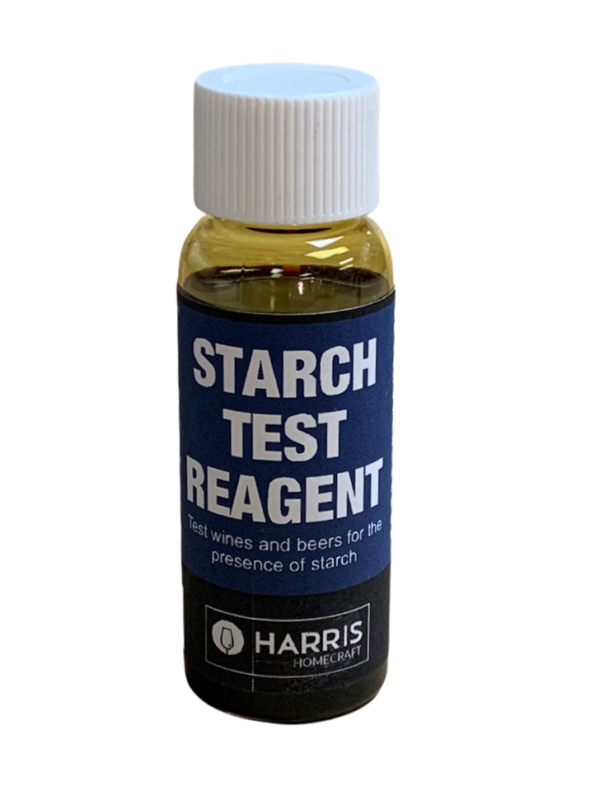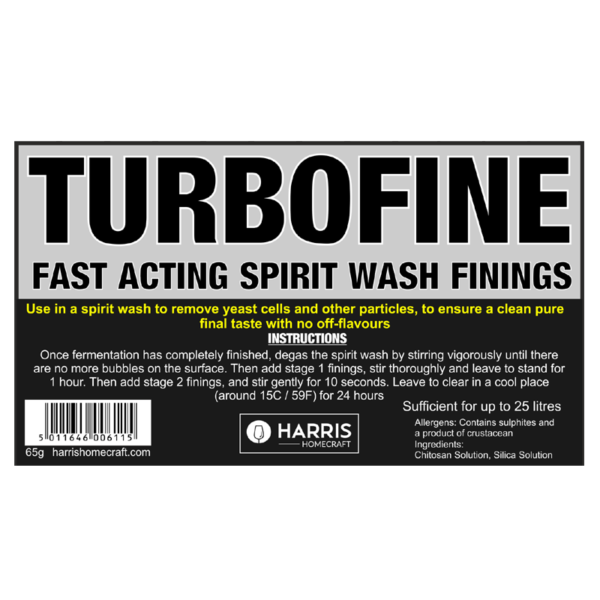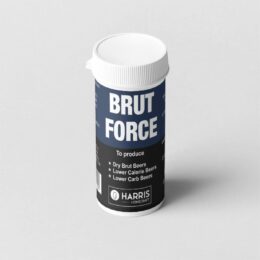Harris Brut Force Enzyme
£1.50
Get it shipped -
Order within -
A powerful enzyme used to produce dry brut beers, lower-calorie beers, and lower carbohydrate beers. A measured dose to treat a 40 pint brew.
Description
What is Brut Force used for?
 Producing Brut IPA’s and drier tasting beers: The latest trend in craft beer is a style called Brut IPA. These are typically light session beers, brewed to be as dry as possible and highly carbonated. They have a “champagne-like”, bone-dry mouthfeel, and a final gravity as low as 1.000. Like a NEIPA, they are bursting with hop aroma and flavour with low bitterness. Given the fermentation limits of most ale yeasts, brewers of this new style have come to rely on unique methods to increase fermentability, one of which involves using enzymes. A step mash can yield a highly fermentable wort that results in a drier beer. However, producing an extra-dry beer requires the addition of an exogenous enzyme (an added enzyme) that will degrade the “dextrins” in the wort to a degree beyond that accomplished in any mash. For craft home brewers wishing to perfect a brut IPA, the enzyme of choice is Brut Force. It is also highly effective when used with partial-mash kits, which are gaining in popularity.
Producing Brut IPA’s and drier tasting beers: The latest trend in craft beer is a style called Brut IPA. These are typically light session beers, brewed to be as dry as possible and highly carbonated. They have a “champagne-like”, bone-dry mouthfeel, and a final gravity as low as 1.000. Like a NEIPA, they are bursting with hop aroma and flavour with low bitterness. Given the fermentation limits of most ale yeasts, brewers of this new style have come to rely on unique methods to increase fermentability, one of which involves using enzymes. A step mash can yield a highly fermentable wort that results in a drier beer. However, producing an extra-dry beer requires the addition of an exogenous enzyme (an added enzyme) that will degrade the “dextrins” in the wort to a degree beyond that accomplished in any mash. For craft home brewers wishing to perfect a brut IPA, the enzyme of choice is Brut Force. It is also highly effective when used with partial-mash kits, which are gaining in popularity.
Low Carb/Lower Calorie Beers: These are achieved as a result of greater starch conversion and higher attenuation (more sugar being fermented out).
What is Brut Force?
Brut Force is one of the most popular amylolytic enzymes used to assist with the hydrolysis of dextrins into glucose, increasing the content of fermentable carbohydrates, and reducing dextrins. In other words, it ferments beers down to much lower final gravities. Be careful to allow fermentation to complete before bottling. Since the final gravity will be much lower than normal, it is important not to bottle too early to avoid excess pressure in bottles.
Brut Force consists of Glucoamylase 400 (a form of amyloglucosidase or AMG). Glucoamylase 400 is a food grade enzyme capable of hydrolyzing both the alpha 1,6 and alpha 1,4 glucosidic bonds releasing single glucose units.
AMG is perfectly safe. Indeed, it is an important digestive enzyme that helps our bodies absorb nutrients and create energy from some of the most common plant foods eaten. It breaks down the starch that occurs naturally in most vegetables eaten. AMG is also used in the production of glucose syrups from starch or dextrins. AMG is obtained from a selected strain of the fungus Aspergillus Niger.
To demonstrate the effectiveness of AMG, add a few drops of the enzyme to a tablespoonful of prepared instant mashed potato (such as ‘Smash‘) within a few minutes, the mashed potato will be liquefied.
AMG can be made inactive (denatured) by heating to 80 °C or above for approximately 10 minutes. This can be a useful way of restricting the degree of dryness achieved. If used in a mash, holding Brut Force at 60 °C for an hour will not denature it. Brut Force can be used between pH 3.5 and pH 5.0 (the optimum being pH 4.0-4.4) and a temperature between 20-65C
How much to add:
For any beer during fermentation:
Only small amounts of Brut Force are required for the production of low carbohydrate or Brut beers. If added at the start of fermentation, typical dose rates are between 0.8ml-2ml per 40 pints of beer; dependent upon desired attenuation and sugar spectrum. Brut Force is conveniently packaged in measured doses to avoid overdosing. One tube is the optimum dose for adding at the fermentation stage of 40 pint (23l) brews.
For All-Grain Mash Beers:
Brut Force can also be added to the mash stage for all grain brewing. The dose rate is normally double (1.6-5ml) added to the mash tun. The pH range for the activity of the product is between 3.0 and 5.0, with optimum performance at pH 4.2. In the mash, enzymic activity of Brut Force is effective between 40°C and 65°C, with optimum performance at 60°C. Hold the mash at around 60 °C (140 °F), at the end of the mash period, and add two tubes of Brut Force. Maintain the temperature at 60°C for around 15 minutes, then proceed towards the boil. The product will be inactivated by raising the temperature of the wort to 80°C. Therefore, the boil will denature the enzyme and stop any further action, if any “dextrins” are left at this point.
If you want the driest beer possible, adding the enzyme during the fermentation stage is the preferred approach. In a taste test conducted by Harris Homecraft, 20 home brewers were asked to rate two beers that had been produced by adding Brut Force during the fermentation stage and two at the mash stage. 5 reported preferring the beer where the enzyme was added to the mash, 11 preferred the beer made with an enzyme added to the fermentation, and 4 people had no preference or perceived no difference.
Storage:
Store Brut Force at a temperature of 3–5 °C, This will maintain its activity for at least a year. At 25°C, the enzyme activity can be expected to be maintained for around 6 months. Do not freeze.
Additional information
| Weight | 0.1 kg |
|---|---|
| Manufacturer |








Reviews
There are no reviews yet. Be the first one to write one.